By Panasonic 186
CR1616 and CR1632 batteries are typically lithium-manganese batteries, which means they use lithium and manganese compounds as the chemically reactive components of the battery. Both batteries have a round metal casing, usually with a similar diameter, just different thicknesses. CR1616 is generally thinner, while CR1632 is thicker.
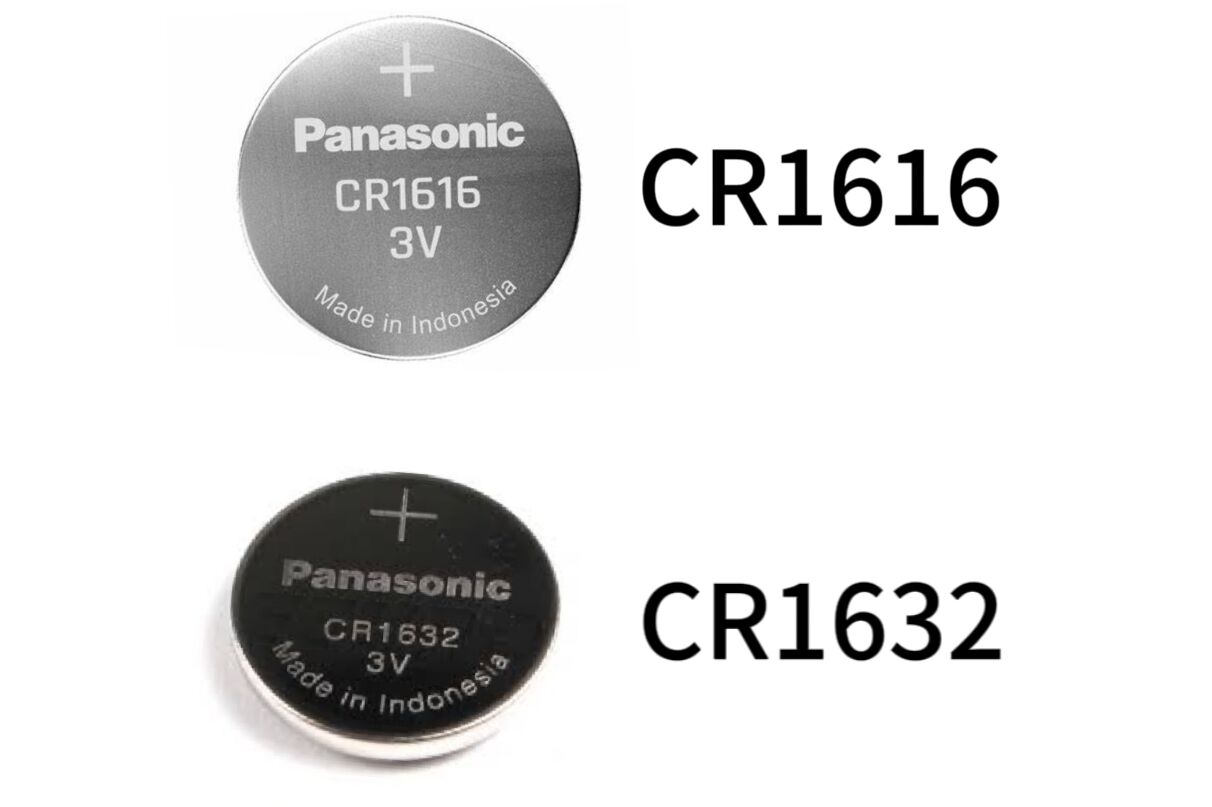
Ⅰ.Description of CR1616
The "CR" included in the name of the CR1616 battery means that it is a lithium manganese button battery. The shape of this battery is usually round. Both the diameter and thickness can indicate its size. "16" means that its diameter is about 16 mm. , "16" means that its thickness is about 1.6 mm. Batteries of this size are very suitable for use in various small electronic devices, such as car remote keys, electronic locks, etc. Because of their small size and moderate capacity, they have high energy density.
Lithium manganese dioxide button batteries use dioxide (MnO2) as the positive active material, metal lithium (Li) as the negative active material, and lithium-containing salt organic electrolytes as the electrolyte.
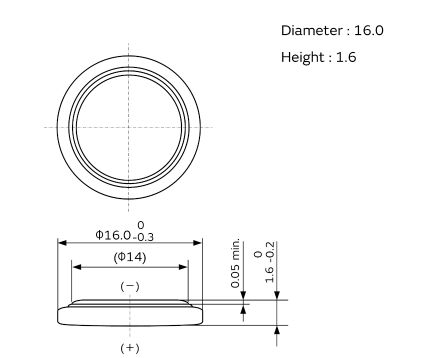
Ⅱ.Description of CR1632
CR1632 battery is a lithium-manganese button battery whose main chemical components include lithium and manganese oxide. This chemical composition makes it suitable for use in various small electronic devices, such as car radio control keys, electronic locks, etc. CR- indicates that the battery is button-shaped. The nominal voltage of the CR1632 battery is 3V, its diameter is 16mm, and its thickness is 3.2mm, so it is larger than the CR1616 battery, which also means it can provide higher capacity and longer service life.
Store in room temperature, ventilated, dry environment (humidity does not exceed 60%), generally up to 2 years.
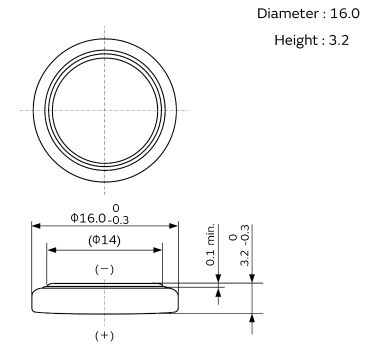
Ⅲ.Characteristics of CR1616 and CR1632
•CR1616
-Especially suitable for memory and RTC backup power: maintain stable operating voltage for a long time under low load conditions.
-3V high energy density: When the voltage is 3V (nominal voltage), the voltage is about twice that of alkaline button cells and silver oxide button cells.
-Excellent leak-proof performance and excellent storage characteristics: Due to the use of leak-proof organic electrolyte, the leak-proof performance is better than other alkaline electrolyte batteries. In addition, the self-discharge rate is reduced to just 1% per year through the use of highly sealed construction and sealant treatments.
-The discharge characteristics are stable and maintain low internal resistance and high operating voltage throughout the entire discharge process: Due to the use of electrolyte with high conductivity, the battery has low internal resistance and stable operating voltage. No matter at room temperature, high temperature or low temperature, the working voltage changes little, providing stable power supply for the equipment.
-Excellent heavy load discharge characteristics.
•CR1632
-Long life: CR1632 batteries can have a long life under proper storage conditions and can continue to operate in small devices for several years.
-Excellent storage characteristics: The active material and electrolyte are carefully selected materials with high stability and unique packaging technology, and have the characteristics of low self-discharge. Relative to the nominal capacity, the self-discharge capacity under normal temperature and humidity conditions is less than 1% per year.
-Good pulse capability
-Stable voltage level during discharge
Ⅳ.Main parameters of CR1616 and CR1632
1.CR1616
•Rated voltage: 3V
•Nominal capacity: 50mAh
•Dimensions: 16.0x1.6mm
•Standard discharge current: 0.1mA
•Maximum continuous discharge current: 3mA
•Maximum pulse discharge current: 8mA
•Operating temperature range: -30℃ ~ 60℃
2.CR1632
•Output voltage: 3 V
•Capacity: 140 mAh
•Termination Type:Pressure Contacts
•Dimensions:16.0x3.2mm
•Minimum operating temperature: -30℃
•Maximum operating temperature: +60℃
•Number of pins: 2
•Product Type: Coin Cell Battery
Ⅴ.Data line chart of CR1616 and CR1632
1.Temperature Characteristics
•CR1616
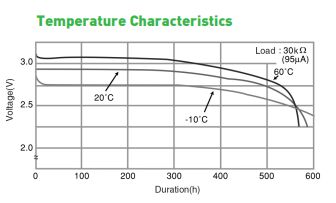
•CR1632

2.Capacity vs. Load Resistance
•CR1616
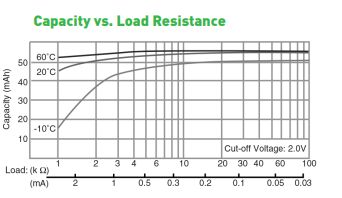
•CR1632
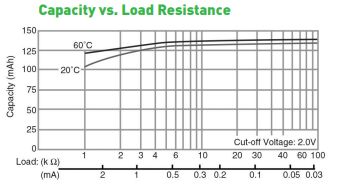
3.Operating Voltage vs. Load Resistance(voltage at 50% discharge depth)
•CR1616
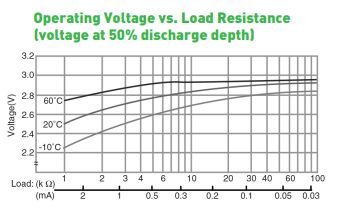
•CR1632
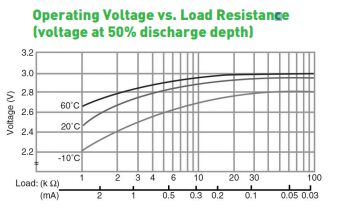
Ⅵ.Precautions for CR1616 and CR1632
CR1616 and CR1632 batteries are both lithium manganese batteries, so they need to pay attention to the same things. Lithium batteries contain unstable chemical materials, such as lithium, organic solvents and some chemical components. Improper use of lithium batteries may cause the battery to heat up, catch fire or explode, which may very well cause personal injury.
1.Do not throw batteries into fire. Batteries are extremely dangerous to dispose of in a fire and may explode and burn.
2.Do not stack batteries together in a messy or exposed manner. When using and storing batteries, avoid direct contact between the positive and negative terminals of the battery, and avoid surface contact between the battery and other metal materials. Because this will cause the battery to short-circuit with strong current and generate a large amount of heat, causing the battery to catch fire and explode.
3.Do not weld directly on the battery surface. The heat generated during welding may damage the sealing rubber ring and other parts, causing electrolyte leakage and internal short circuit, which may cause explosion and fire.
4.Do not heat the battery. When lithium batteries are heated to 100°C (212°F), the rubber rings and other parts used for sealing are made of materials such as resin, which may melt when heated, causing electrolyte leakage and internal short circuits. This may cause an explosion and fire.
5.Install and use the battery correctly to prevent battery short circuit and incorrect installation of positive and negative poles. Different electrical appliances should be equipped with corresponding batteries. When installing, pay attention to whether the positive and negative poles of the battery match the positive and negative polarities of the electrical appliances.
6.Do not charge the battery. If the battery is charged, gas will be produced inside the battery, causing rapid expansion inside the battery, causing explosion and fire.
7.Batteries of different types cannot be mixed. Because different types of batteries and old and new batteries have different voltages and capacities, mixing them may cause over-discharge of the batteries, resulting in the risk of expansion and explosion.
8.Do not deform the battery. When strong pressure is applied to the battery, the sealing ring of the battery and other parts of the battery will be deformed and damaged, causing battery leakage and internal short circuit, causing the battery to heat, catch fire and explode.
Frequently Asked Questions
1.What is the lifespan of CR1616 and CR1632?
CR1616 batteries have a lifespan of 1 to 5 years; CR1632 batteries generally have a relatively high capacity, so under normal use conditions, their lifespan can be as long as 2 to 10 years. The life of both CR1616 and CR1632 depends on their load in the device (current demand), operating temperature, storage temperature and other environmental factors.
2.What are the application fields of CR1616 and CR1632?
CR1616 and CR1632 batteries are widely used in various small electronic devices, such as: watches, calculators, electronic alarm clocks, car key FOB, etc.
3.How to install and replace CR1632 battery correctly?
Before replacing the battery, turn off the device and unplug it from power. This will prevent short circuits or damage to electronic components. Find the battery compartment cover or battery compartment door on the device and open it, carefully remove the existing CR1632 battery. Be careful during this process to avoid damaging the battery or the electronic components inside the battery compartment. Before installing a new battery, make sure you know the correct battery polarity. Usually, the battery will be marked with positive (+) and negative (-) marks, and the battery compartment should also be marked accordingly. Make sure the battery is properly aligned.
4.How to identify whether the CR1616 battery is exhausted?
Some devices have a battery indicator, usually an icon or symbol, that shows the battery level. If the battery level indicator shows low battery level, or shows no battery level, this may be a sign that the battery is exhausted. If you are using a small LED light or device powered by a CR1616 battery, the LED light may become dim, which may be a sign of low battery power.